eliakeem
JF-Expert Member
- May 29, 2009
- 15,654
- 13,797
Tuna kila sababu ya kuwa na wasiwasi na mambo mengi yanayohusu tiba hasa kutoka magharibi. Kuna mahali niliwahi soma jinsi waAfrika walivyokuwa wakitumika kama viumbe wa majaribio ya tafiti na chanjo mbalimbali, machozi yalinitoka kwa uchungu ulioambatana na hasira. Ilikuwa hivi, walitaka kujua kama mtu anapona akiwa mgonjwa kwa kupewa dawa au hisia (psychology) tu kwamba amepewa dawa. Basi wakachukua waAfrika wenye ugonjwa wa kaswende wakawatenga kwenye makundi mawili.
Moja wakawapa dawa za kweli na lingine wakawapa dawa zisizo za kweli (placebo). Halafu wakasubiri kuona matokeo. Lile group la kwanza likapata nafuu, lakini lile lililopewa dawa zilizotengenezewa unga wa muhogo, likateketea. Inasemekana sample za kundi la pili zilioza, yaani wale watu wakaanza kunuka, especially wanawake. This is one of many experience of abusing Afrikans in Medical Experiments. Tuna haki ya kuwa macho na chanjo zao, hususan hizi ambazo ni za voda fasta.
She gazed straight ahead at the swarm of journalists and cameras eager to capture this historic moment: She was receiving the first COVID-19 vaccination in the nation.
As the director of critical-care nursing at Long Island Jewish Medical Center and someone who has witnessed up close the trail of death this coronavirus has left behind, Lindsay, 52, saw her vaccination in December as an opportunity to help put an end to this deadly pandemic.
"I thought about ... stumping COVID, getting rid of it so it can’t kill us anymore and rob us of our lives and our livelihoods," Lindsay said.
The significance of a Black woman being the first American vaccinated also didn't escape her. She hoped to soothe any skepticism about the vaccine that exists in communities of color. But she also understood that this country's legacy of racist medical practices couldn't be undone in an instant.
"I know just me getting the vaccine won't erase the centuries of mistrust and any inhumane and harmful behaviors that have taken place," Lindsay said. "I know my one act of taking the vaccine won't erase those fears."

Since the country's inception, the American medical institution has subjected Black bodies to abuse, exploitation and experimentation. Corpses being pulled from the ground for scientific study. Black women being sterilized without their knowledge and robbed of the opportunity to bear children. An entire Black community misled into believing they were immune from a fatal illness. Time and time again, Black people have been betrayed by the medical establishment, fostering a lingering, deep-rooted mistrust.
More:Black Americans are the most hesitant to get a COVID-19 vaccine
More:There's skepticism in Black, Latino communities about COVID-19 vaccines, but women of color can help swing the momentum
Perhaps the most notorious example of experimentation on Black bodies was the Tuskegee Syphilis Study, in which 400 sharecroppers were denied treatment for syphilis over 40 years. In 1932, U.S. Public Health Service employees recruited hundreds of poor, uneducated African-American men with syphilis and watched them die avoidable deaths over time, even after a cure was found. The discovery of the experiment made front-page news in 1972. The study participants won a $10 million class-action settlement in 1975 and an apology from President Bill Clinton in 1997.
"When we talk about why Black people wouldn't trust a medical establishment a lot of people cite Tuskegee, which makes sense," said Rana Hogarth, a history professor at the University of Illinois. "But Tuskegee is not the start."
Most slave ships had doctors aboard. While some doctors were professional, many took a cruel approach in treating sick Africans. Ill captives could be thrown overboard and, as they were property, the merchants and owners could collect insurance money. Captives were often forced to take medication or food while being threatened by a whip, cutlass or pistol. In some cases, slaves’ jaws were pried open with torture instruments, which would break their teeth to force food down their throats, said Carolyn Roberts, a history professor at Yale.
“This was a new form of medicine where enslaved people were so dehumanized that these violations were just a normal par for the course,” Roberts said.

After the Africans were sold and transferred to plantations, the medical care they received varied. Male owners generally sought to limit their involvement with daily healthcare, said Sharla Fett, a history professor at Occidental College in Los Angeles. The daily labor of sick care often fell on the shoulders of enslaved women. On larger plantations, overseers made everyday health decisions, including prescribing medicine and vaccinations.
The relationship between doctors and enslaved patients was inherently compromised because slaveholders had agency over slave bodies. This dynamic left slaves "medically incompetent" and unable to initiate or prevent treatments without a slaveowner's consent, said Fett, who outlined the dehumanizing ways slave owners used medicine in her award-winning book, "Working Cures."
In some cases, slaveholders intentionally used medicine to punish and torture slaves. A former slave, Moses Roper, detailed one harrowing example in his 1838 narrative about his escape from a South Carolina cotton plantation. A cruel slave owner forced a female slave to consume as much castor oil, a purgative, as she could. Afterward, he forced her into a wooden box and weighed it down with stones so she couldn't open it. He left her in that box for one night, essentially burying her alive in her own waste.
One owner ordered a slave to take vomit-inducing medicine to entertain his family. Another punished slaves by placing them in stocks arranged above each other. He then forced them to take large doses of medication and release their "filth down upon each other."
"If that kind of medicine is used that way, why would somebody trust if they were then given that medicine if they were sick," Fett said in an interview.

Enslaved women and reproductive experiments
But misuse of medicine was only the tip of the iceberg. Some slaveholders and physicians forced Black women to participate in reproductive procedures without anesthesia. In the 1840s, a 17-year-old enslaved woman endured 30 such surgeries, according to Dr. J. Marion Sims' biography.
In the 19th-century South, most Caesarean sections were performed on African-American women, at a time when the operation was "usually fatal for either mother or infant, and sometimes both," Fett wrote.
These experiments on enslaved Black women "wouldn't have been done on white women because they would have been considered too risky."
The value of an enslaved person during their life was measured by labor and reproduction. In death, they proved instrumental in the evolution of Southern medicine.
Slave cadavers were crucial in teaching white medical students about the human body. To keep a steady supply of cadavers for medical experimentation, some colleges pilfered dead bodies from slave cemeteries, Hogarth said.
In an 1824 advertisement for the Medical College of South Carolina, the school boasted about the number of corpses it would have for medical research, with "subjects being obtained from among the colored population in sufficient number for every purpose, and proper dissection carried on without offending any individual in the community."
Rush was influenced by John Lining, a reputable South Carolina physician, who made his assumption based on observations of a 1748 yellow fever epidemic in Charleston. "There is something very singular in the constitution of the Negroes, which renders them not liable to this fever, " Lining wrote in a letter to another physician.
In an essay for a Philadelphia newspaper, Rush used Lining's quote and urged Black Philadelphians to help those who were ill. He failed to consider that many of the Black people in South Carolina were slaves who may have been exposed to yellow fever before coming to America. Thus, they may have been more resistant to the disease than free Black people in Philadelphia, according to Hogarth.

Rush, one of America's founding fathers and an abolitionist, wrote a letter to his friend, Richard Allen, founder of the African Methodist Episcopal Church, requesting the Black community's help.
After being assured African-Americans could not be infected with yellow fever and feeling a "duty to do all the good" for the people suffering, Allen rallied the Black community.
Black caretakers administered medicine, nursed the sick and buried the dead during the deadly epidemic. That year, an estimated two to three hundred Black people died out of roughly 5,000 people in total.
The claim of "innate Black immunity and minimal Black suffering from the disease" meant that Black people could be "called on and expected to serve white interests with little acknowledgment of their sacrifice," Hogarth wrote in her 2017 book, "Medicalizing Blackness."
As a civil rights organizer, Hamer registered Black voters in Mississippi. While returning from a voter registration training in South Carolina, Hamer was arrested and brutally beaten in a local jailhouse. Hamer's reputation soared in 1964 when she co-founded the Mississippi Freedom Democratic Party, which challenged the state's whites-only Democratic Party.

But the most heinous act of racism Hamer experienced came at the hands of a white doctor who took away her ability to have children.
In 1961, Hamer went to a hospital to have a tumor removed from her uterus. Instead, the white doctor gave her a hysterectomy without her knowledge or consent.
"I would say about six out of the 10 Negro women that go to the hospital are sterilized," Hamer said in 1964 while speaking on a civil rights panel.
The practice of sterilizing poor, Black women was customary not only in Mississippi but throughout the South. In the 1970s, the pervasiveness of this abusive practice came under fire after two girls, age 12 and 14, were sterilized at an Alabama family clinic. Their mother, who couldn't read or write, signed an "X" on a piece of paper, thinking her daughters would receive birth control shots, according to a lawsuit complaint filed against two government agencies on behalf of the two girls.
A 1927 Supreme Court decision, which upheld a Virginia law that allowed the sterilization of people who were considered unfit, empowered doctors to perform these immoral procedures, said Kathie Stromile Golden, provost and vice president of academic affairs at Mississippi Valley State University.
"It was a way to decimate the Black population (and keep it) from increasing," she said. Distrust of doctors still exists among Mississippi's Black community today. In a recent survey, more than 40% of Black Mississippians said they probably wouldn't take the vaccine or are unsure if they will take it, said Dr. Thomas E. Dobbs III, Mississippi's state health officer.
Whether it was being subjected to medical experimentation, deceived by doctors or abused by medicine, African-Americans’ trepidation about getting the COVID vaccine is not without historical merit.
"When people tell me there are Black people skeptical about (the COVID vaccine) … my first impulse is to say that's what happens when you leave unaddressed these problems of racial inequity and injustices in history," Hogarth said.
Moja wakawapa dawa za kweli na lingine wakawapa dawa zisizo za kweli (placebo). Halafu wakasubiri kuona matokeo. Lile group la kwanza likapata nafuu, lakini lile lililopewa dawa zilizotengenezewa unga wa muhogo, likateketea. Inasemekana sample za kundi la pili zilioza, yaani wale watu wakaanza kunuka, especially wanawake. This is one of many experience of abusing Afrikans in Medical Experiments. Tuna haki ya kuwa macho na chanjo zao, hususan hizi ambazo ni za voda fasta.
America has a history of medically abusing Black people. No wonder many are wary of COVID-19 vaccines
Sandra Lindsay sat calmly as the needle pierced her flesh.She gazed straight ahead at the swarm of journalists and cameras eager to capture this historic moment: She was receiving the first COVID-19 vaccination in the nation.
As the director of critical-care nursing at Long Island Jewish Medical Center and someone who has witnessed up close the trail of death this coronavirus has left behind, Lindsay, 52, saw her vaccination in December as an opportunity to help put an end to this deadly pandemic.
"I thought about ... stumping COVID, getting rid of it so it can’t kill us anymore and rob us of our lives and our livelihoods," Lindsay said.
The significance of a Black woman being the first American vaccinated also didn't escape her. She hoped to soothe any skepticism about the vaccine that exists in communities of color. But she also understood that this country's legacy of racist medical practices couldn't be undone in an instant.
"I know just me getting the vaccine won't erase the centuries of mistrust and any inhumane and harmful behaviors that have taken place," Lindsay said. "I know my one act of taking the vaccine won't erase those fears."
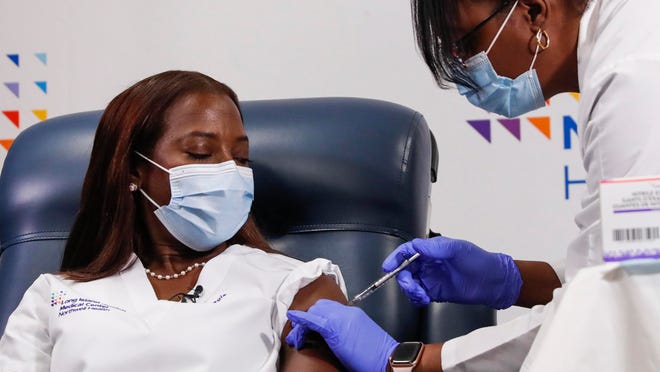
Since the country's inception, the American medical institution has subjected Black bodies to abuse, exploitation and experimentation. Corpses being pulled from the ground for scientific study. Black women being sterilized without their knowledge and robbed of the opportunity to bear children. An entire Black community misled into believing they were immune from a fatal illness. Time and time again, Black people have been betrayed by the medical establishment, fostering a lingering, deep-rooted mistrust.
More:Black Americans are the most hesitant to get a COVID-19 vaccine
More:There's skepticism in Black, Latino communities about COVID-19 vaccines, but women of color can help swing the momentum
Perhaps the most notorious example of experimentation on Black bodies was the Tuskegee Syphilis Study, in which 400 sharecroppers were denied treatment for syphilis over 40 years. In 1932, U.S. Public Health Service employees recruited hundreds of poor, uneducated African-American men with syphilis and watched them die avoidable deaths over time, even after a cure was found. The discovery of the experiment made front-page news in 1972. The study participants won a $10 million class-action settlement in 1975 and an apology from President Bill Clinton in 1997.
"When we talk about why Black people wouldn't trust a medical establishment a lot of people cite Tuskegee, which makes sense," said Rana Hogarth, a history professor at the University of Illinois. "But Tuskegee is not the start."
Medical abuse on the slave ship, plantation
Black anxieties about being treated by doctors may have started in the belly of slave ships, experts say. Medical treatment aboard slave ships was based on violence and terror that was already threaded through the entire Middle Passage experience.Most slave ships had doctors aboard. While some doctors were professional, many took a cruel approach in treating sick Africans. Ill captives could be thrown overboard and, as they were property, the merchants and owners could collect insurance money. Captives were often forced to take medication or food while being threatened by a whip, cutlass or pistol. In some cases, slaves’ jaws were pried open with torture instruments, which would break their teeth to force food down their throats, said Carolyn Roberts, a history professor at Yale.
“This was a new form of medicine where enslaved people were so dehumanized that these violations were just a normal par for the course,” Roberts said.
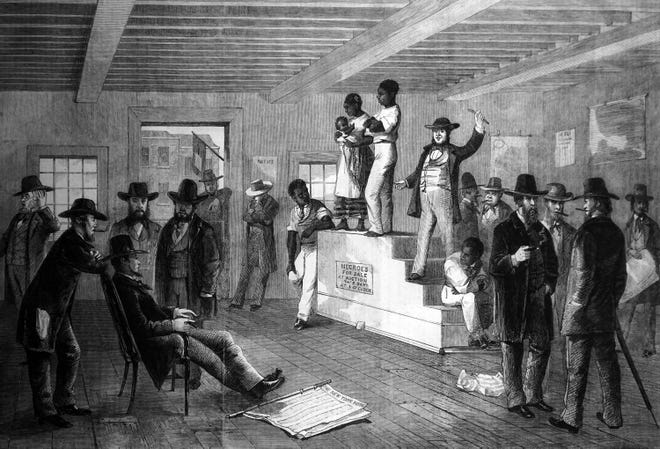
After the Africans were sold and transferred to plantations, the medical care they received varied. Male owners generally sought to limit their involvement with daily healthcare, said Sharla Fett, a history professor at Occidental College in Los Angeles. The daily labor of sick care often fell on the shoulders of enslaved women. On larger plantations, overseers made everyday health decisions, including prescribing medicine and vaccinations.
The relationship between doctors and enslaved patients was inherently compromised because slaveholders had agency over slave bodies. This dynamic left slaves "medically incompetent" and unable to initiate or prevent treatments without a slaveowner's consent, said Fett, who outlined the dehumanizing ways slave owners used medicine in her award-winning book, "Working Cures."
In some cases, slaveholders intentionally used medicine to punish and torture slaves. A former slave, Moses Roper, detailed one harrowing example in his 1838 narrative about his escape from a South Carolina cotton plantation. A cruel slave owner forced a female slave to consume as much castor oil, a purgative, as she could. Afterward, he forced her into a wooden box and weighed it down with stones so she couldn't open it. He left her in that box for one night, essentially burying her alive in her own waste.
One owner ordered a slave to take vomit-inducing medicine to entertain his family. Another punished slaves by placing them in stocks arranged above each other. He then forced them to take large doses of medication and release their "filth down upon each other."
"If that kind of medicine is used that way, why would somebody trust if they were then given that medicine if they were sick," Fett said in an interview.
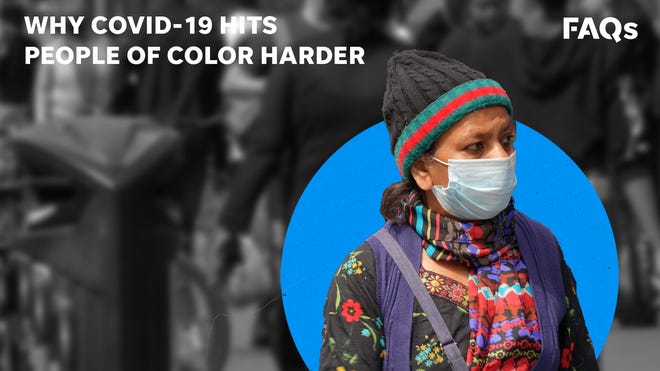
Enslaved women and reproductive experiments
But misuse of medicine was only the tip of the iceberg. Some slaveholders and physicians forced Black women to participate in reproductive procedures without anesthesia. In the 1840s, a 17-year-old enslaved woman endured 30 such surgeries, according to Dr. J. Marion Sims' biography.
In the 19th-century South, most Caesarean sections were performed on African-American women, at a time when the operation was "usually fatal for either mother or infant, and sometimes both," Fett wrote.
These experiments on enslaved Black women "wouldn't have been done on white women because they would have been considered too risky."
The value of an enslaved person during their life was measured by labor and reproduction. In death, they proved instrumental in the evolution of Southern medicine.
Slave cadavers were crucial in teaching white medical students about the human body. To keep a steady supply of cadavers for medical experimentation, some colleges pilfered dead bodies from slave cemeteries, Hogarth said.
In an 1824 advertisement for the Medical College of South Carolina, the school boasted about the number of corpses it would have for medical research, with "subjects being obtained from among the colored population in sufficient number for every purpose, and proper dissection carried on without offending any individual in the community."
Yellow Fever ravages Philadelphia
In 1793, yellow fever swept through Philadelphia, wiping out nearly 10% of the city's population. As the disease tore through the city, one of the nation's most respected physicians, Benjamin Rush, believed Black people were immune from the disease.Rush was influenced by John Lining, a reputable South Carolina physician, who made his assumption based on observations of a 1748 yellow fever epidemic in Charleston. "There is something very singular in the constitution of the Negroes, which renders them not liable to this fever, " Lining wrote in a letter to another physician.
In an essay for a Philadelphia newspaper, Rush used Lining's quote and urged Black Philadelphians to help those who were ill. He failed to consider that many of the Black people in South Carolina were slaves who may have been exposed to yellow fever before coming to America. Thus, they may have been more resistant to the disease than free Black people in Philadelphia, according to Hogarth.
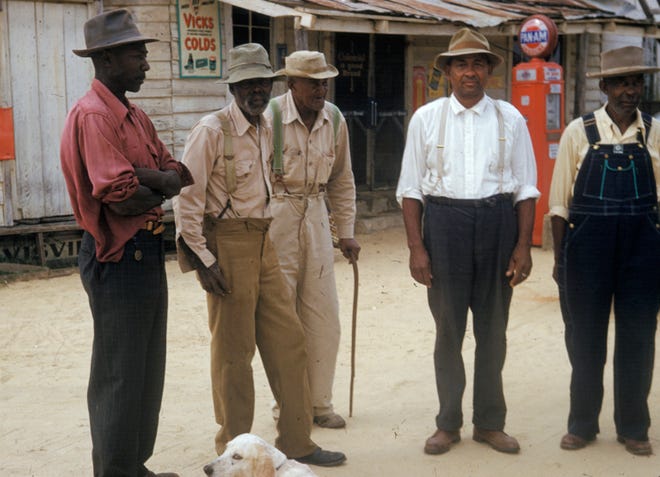
Rush, one of America's founding fathers and an abolitionist, wrote a letter to his friend, Richard Allen, founder of the African Methodist Episcopal Church, requesting the Black community's help.
After being assured African-Americans could not be infected with yellow fever and feeling a "duty to do all the good" for the people suffering, Allen rallied the Black community.
Black caretakers administered medicine, nursed the sick and buried the dead during the deadly epidemic. That year, an estimated two to three hundred Black people died out of roughly 5,000 people in total.
The claim of "innate Black immunity and minimal Black suffering from the disease" meant that Black people could be "called on and expected to serve white interests with little acknowledgment of their sacrifice," Hogarth wrote in her 2017 book, "Medicalizing Blackness."
Fannie Lou Hamer and forced sterilization
Fannie Lou Hamer, a civil rights heroine and political dynamo, was galvanized to fight against injustice after enduring decades of racism in Mississippi. Surviving a hardscrabble upbringing on a cotton plantation fueled her desire for change.As a civil rights organizer, Hamer registered Black voters in Mississippi. While returning from a voter registration training in South Carolina, Hamer was arrested and brutally beaten in a local jailhouse. Hamer's reputation soared in 1964 when she co-founded the Mississippi Freedom Democratic Party, which challenged the state's whites-only Democratic Party.
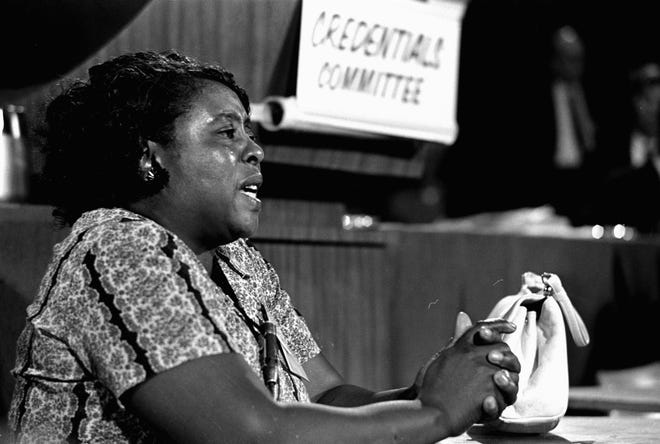
But the most heinous act of racism Hamer experienced came at the hands of a white doctor who took away her ability to have children.
In 1961, Hamer went to a hospital to have a tumor removed from her uterus. Instead, the white doctor gave her a hysterectomy without her knowledge or consent.
"I would say about six out of the 10 Negro women that go to the hospital are sterilized," Hamer said in 1964 while speaking on a civil rights panel.
The practice of sterilizing poor, Black women was customary not only in Mississippi but throughout the South. In the 1970s, the pervasiveness of this abusive practice came under fire after two girls, age 12 and 14, were sterilized at an Alabama family clinic. Their mother, who couldn't read or write, signed an "X" on a piece of paper, thinking her daughters would receive birth control shots, according to a lawsuit complaint filed against two government agencies on behalf of the two girls.
A 1927 Supreme Court decision, which upheld a Virginia law that allowed the sterilization of people who were considered unfit, empowered doctors to perform these immoral procedures, said Kathie Stromile Golden, provost and vice president of academic affairs at Mississippi Valley State University.
"It was a way to decimate the Black population (and keep it) from increasing," she said. Distrust of doctors still exists among Mississippi's Black community today. In a recent survey, more than 40% of Black Mississippians said they probably wouldn't take the vaccine or are unsure if they will take it, said Dr. Thomas E. Dobbs III, Mississippi's state health officer.
Whether it was being subjected to medical experimentation, deceived by doctors or abused by medicine, African-Americans’ trepidation about getting the COVID vaccine is not without historical merit.
"When people tell me there are Black people skeptical about (the COVID vaccine) … my first impulse is to say that's what happens when you leave unaddressed these problems of racial inequity and injustices in history," Hogarth said.